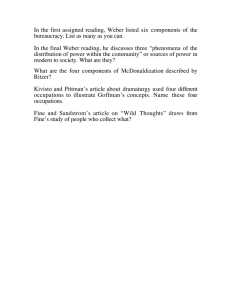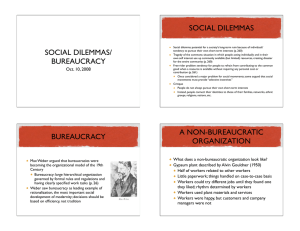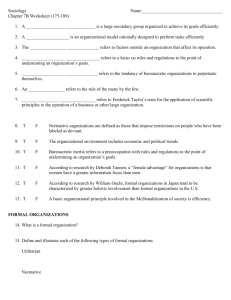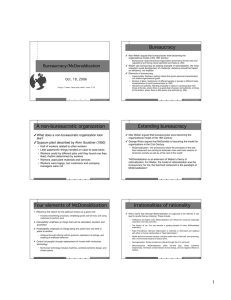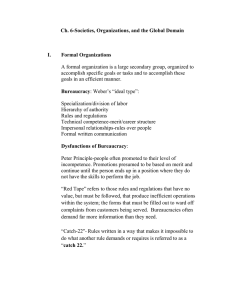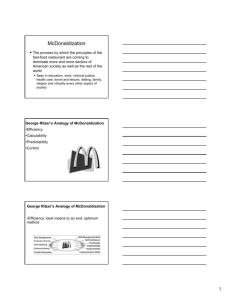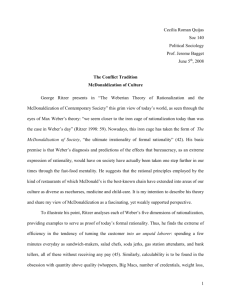ELEMENTS OF BUREAUCRACY BUREAUCRACY/ MCDONALDIZATION
advertisement
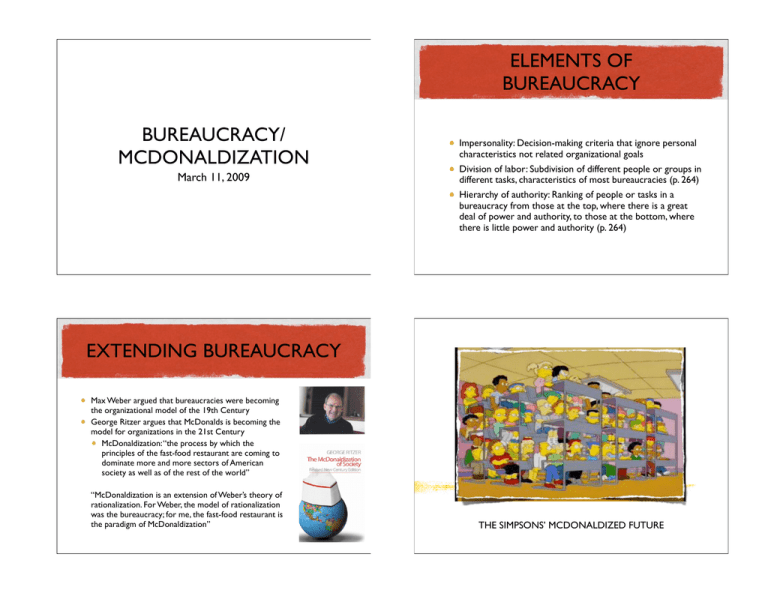
ELEMENTS OF BUREAUCRACY BUREAUCRACY/ MCDONALDIZATION March 11, 2009 Impersonality: Decision-making criteria that ignore personal characteristics not related organizational goals Division of labor: Subdivision of different people or groups in different tasks, characteristics of most bureaucracies (p. 264) Hierarchy of authority: Ranking of people or tasks in a bureaucracy from those at the top, where there is a great deal of power and authority, to those at the bottom, where there is little power and authority (p. 264) EXTENDING BUREAUCRACY Max Weber argued that bureaucracies were becoming the organizational model of the 19th Century George Ritzer argues that McDonalds is becoming the model for organizations in the 21st Century McDonaldization: “the process by which the principles of the fast-food restaurant are coming to dominate more and more sectors of American society as well as of the rest of the world” “McDonaldization is an extension of Weber’s theory of rationalization. For Weber, the model of rationalization was the bureaucracy; for me, the fast-food restaurant is the paradigm of McDonaldization” THE SIMPSONS’ MCDONALDIZED FUTURE FOUR ELEMENTS OF MCDONALDIZATION 1. Efficiency: the search for the optimum means to a given end Includes streamlining processes, simplifying goods and services, and using customers to perform work 2. Calculability: emphasis on things that can be calculated, counted, and quantified 3. Predictability: emphasis on things being the same from one time or place to another Achieved through offering uniform products, replications of settings, and scripting of employee behaviors 4. Control (of people) through replacement of human with nonhuman technology Nonhuman technology includes machines, architecture/interior design, and limited options
